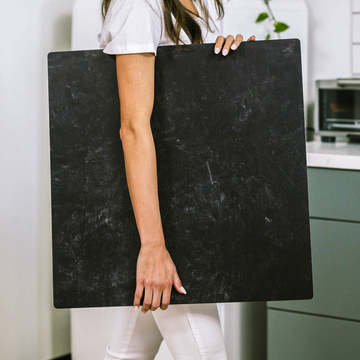There’s something unmistakably elegant about a slate background in photography. Whether you’re photographing handmade candles for your Etsy shop or capturing plated food for your latest cookbook, slate brings a quiet sophistication and texture that elevates your images. But most photographers only scratch the surface-slate is far more than a stylish backdrop. Let’s explore the unseen power, technical nuance, and creative opportunities of slate backgrounds, and why they just might be the most versatile tool hiding in your studio.
The Science of Slate: Texture That Tells a Story
Slate might seem simple, but zoom in-literally-and you’ll discover a landscape of ridges, valleys, and fine layers. Real slate is forged from compressed clay and volcanic ash, creating micro-textures that play beautifully with light. Even realistic replica slate used in photography studios can mimic this effect, giving you depth and dimension in every shot.
These delicate patterns scatter light in subtle ways. Under soft, diffused lighting, slate quietly boosts your product’s separation from the background. With harder, more directional lighting, those textures take center stage, adding a tactile realism that printed or digital backdrops just can’t match.
- Soft Light: Creates gentle micro-contrasts, making products look crisp and high-end.
- Hard Light: Dramatically highlights the slate’s structure, perfect for artisan or rustic brands.
Pro Tip: Try focus stacking your images, even on simple flat lays. By combining several images at different focus points, you can bring out every fine detail in both your product and the slate’s texture-giving your photos a dimensional quality that stands out online.
Color Interplay: The Slate Surface Effect
Here’s a secret: slate is rarely just “gray.” Depending on the minerals, it often has undertones of green, blue, or even brown. When you’re working with different lighting-think warm bulbs or cool LED panels-these hues can shift, subtly affecting the perception of your product’s true color.
This matters especially if you photograph color-sensitive items like ceramics, food, or skincare. That gentle color cast from the slate surface can sneak its way onto your product and skew what your buyers see. A simple white balance fix won’t always do the trick-sometimes it takes a little more finesse.
- Tip: Photograph a color checker or reference card both on and off the slate surface. This allows you to spot any hue shifts and correct them in post-editing with selective color adjustments, ensuring your product colors remain true.
Patina & Personality: Embracing Slate’s Imperfections
Slate tells a story, and sometimes those stories show up as “imperfections.” Over time, real slate absorbs tiny amounts of moisture and oil. This can create dark spots or a gentle patina that changes how the background looks. For many photographers, this is a problem. For others, it’s pure magic-a way to add organic charm and authenticity to the image.
- For ultra-crisp shots or luxury goods, choose sealed or high-quality replica slates that don’t stain.
- For storytelling or artisanal brands, those lived-in marks can be an asset, making your subject feel handmade and real.
- Did you know? Some food photographers enhance the richness of slate by rubbing in a touch of mineral oil-just test on a small area first, because it’s often permanent!
Lighting Slate Like a Pro: Direction and Control
Slate is matte, but it’s not flat-catch it at the right angle and you’ll find glossy highlights gliding across the surface. These can add gorgeous visual interest or distract from your product, depending on your lighting setup.
- Try a polarizing filter on your camera, paired with a polarizing gel on your key light. This technique, called cross-polarization, lets you tame reflections and reveal every bit of texture.
- Move your light around to experiment with rim lighting. Even a slight shift can add a beautiful halo effect, helping light-colored products stand out against the dark stone.
Don’t be afraid to play. The slate’s response to light can be the difference between a “just okay” shot and one that captures a viewer’s imagination.
Mood & Brand Story: What Slate Says About Your Products
Of all photographic surfaces, slate carries a unique emotional weight. It feels solid, timeless, and crafted. Want to communicate heritage, durability, or a “made by hand” vibe? Slate is your silent storyteller.
- Pair with ceramics, natural skincare, tools, or baked goods for instant artisan appeal.
- For something modern, try setting sleek packaging or tech accessories against a weathered slate slab for intriguing contrast.
Bonus: For small business owners, try shooting your creative process-hands at work, materials in process-directly on slate. Suddenly, your background is more than a surface; it’s part of your brand’s visual journey.
Slate: More Than a Backdrop, Your Creative Partner
With its rich texture, interactive color qualities, and emotional resonance, slate is anything but ordinary. Experiment with angles, light, and even a little purposeful imperfection to discover how this humble stone can lend drama, polish, and storytelling power to your photography.
Whether you’re shooting with real stone or a faithfully crafted replica, slate offers endless ways to elevate your images. Have your own tips or creative stories using slate? Share them below-every creator’s vision is unique, and we’re here to help each other shine.



